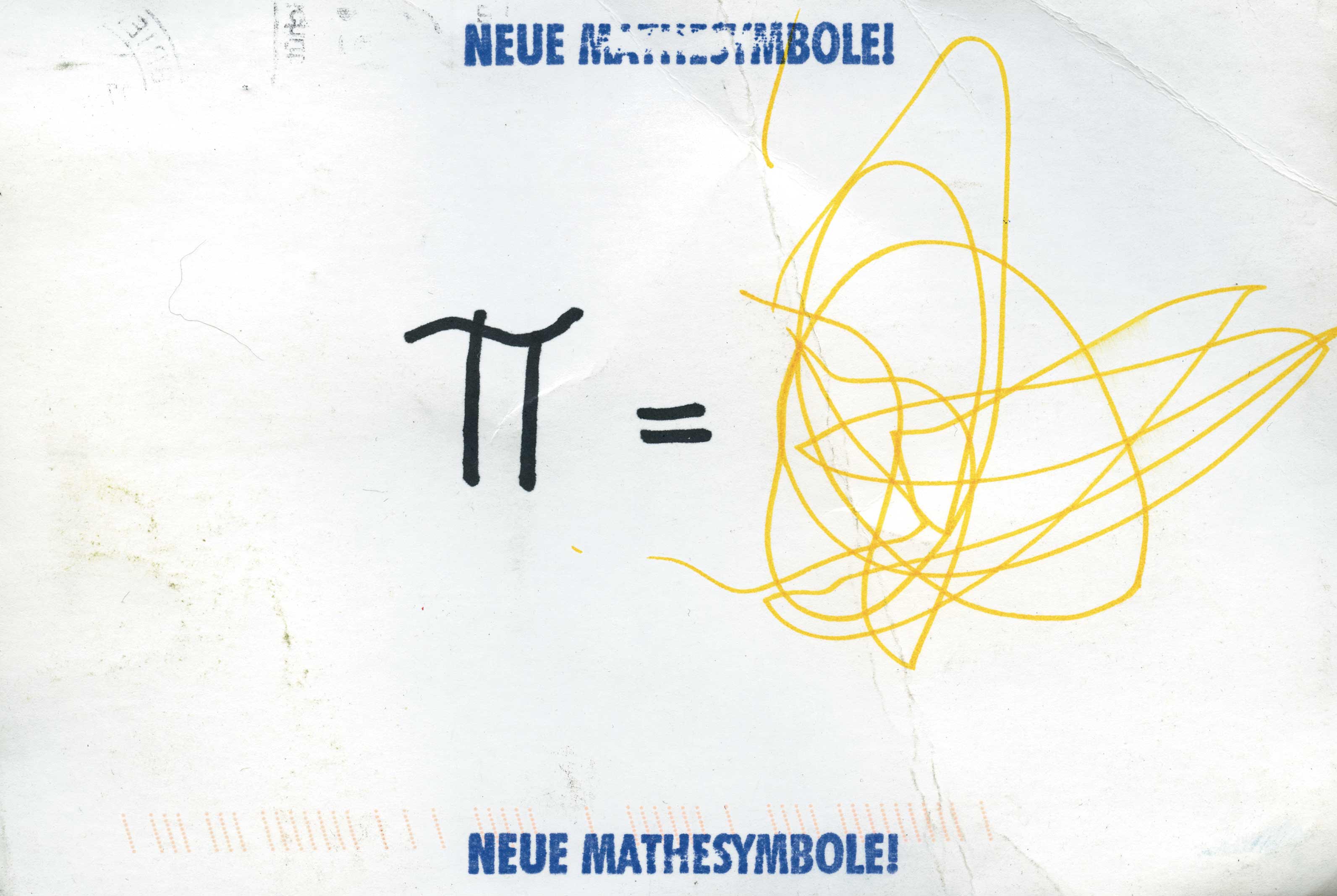(im)possibilities

Birgit Rathsmann, Mathesymbole (Pi), 2007. Inkjet print mounted on Dibond aluminum. 36 x 48 in. Courtesy of the artist.
(im)possibilities is a group exhibition that addresses the themes of chance and inevitability with work by Erica Baum, Ellie Ga, Birgit Rathsmann, Patrick Resing, and Michael Stevenson. These artists explore the relationship between human psychology and a world of constantly changing variables. Using probability theory, linguistics, mathematics, radar imaging, robotics, and fortune telling, these artists question the import of predicting fixed outcomes. The works included in the exhibition extend Jorge Luis Borges’ metaphor of the library, the labyrinthine structure in which logical paths to universal knowledge frustrate meaning and obfuscate truth. With these works, (im)possibilities seeks to create a similar space of uncertainty and mystification.
Michael Stevenson’s video, Introduccion a la Teoria de la Probabilidad, outlines the series of events that led the Shah of Iran, Manuel Antonio Noriega, and Patricia Hearst to a small island in Panama in 1979. A narrator reconstructs the political and personal circumstances that caused this improbable gathering, drawing heavily on a vintage textbook on probability theory. Nevertheless probability remains an abstract concept, and any sound theoretical framework collapses under the incredible narrative that unfolds.
Ellie Ga’s multiform project, The Fortunetellers, draws on the artist’s six-month residency on Tara, a scientific research vessel drifting in Arctic ice. (im)possibilities includes a selection of works from this project in which Ga uses photography, video, and fortune-telling to interweave personal narrative with divination to explore the psychological effects of monotony and unpredictability.
Patrick Resing’s live-action robot, It’s Going to Happen, engages the viewer in its unpredictable outcome. As the robot pushes a ping-pong ball back and forth on top of a pedestal, it threatens to release it, repeating, “It’s going to happen.” Anticipation of the moment the robot might push the ball off the plinth transfixes the viewer, as does the possibility of the robot’s bluff.
Similarly playing on human anxieties, Birgit Rathsmann’s found weather radar images emphasize the mesmerizing visual qualities of the devastating forces of nature. Approaching risk from a linguistic angle, Rathsmann’s series Neue Mathesymbole (New Mathsymbols), questions the universality of ideograms through an infantile translation of common mathematical symbols. Rathsmann collaborated with a two-year old to transmogrify standard marks of mathematical notation into colorful scribble. Six postcards juxtapose colorful “new mathsymbols” with the formal language of mathematics to playfully expose the arbitrariness of symbols.
Like Rathsmann’s flashcards, Erica Baum’s photographic series, Dog Ear, recalls Borges’ “The Total Library” in which a group of men consider “juggling letters and symbols” to recreate lost knowledge. Folding and photographing pages from found paperbacks, Baum fragments these texts visually and conceptually to create new linguistic structures. Baum engages text to a poetic end and allows the viewer to ponder what Borges called the “improbable gift[s] of chance.”
Generous support for Center Space Project comes from the University Co-Op along with Robin and Trey Hancock.
Curated by C.C. Marsh, Ph.D. student in Art History at The University of Texas at Austin.




